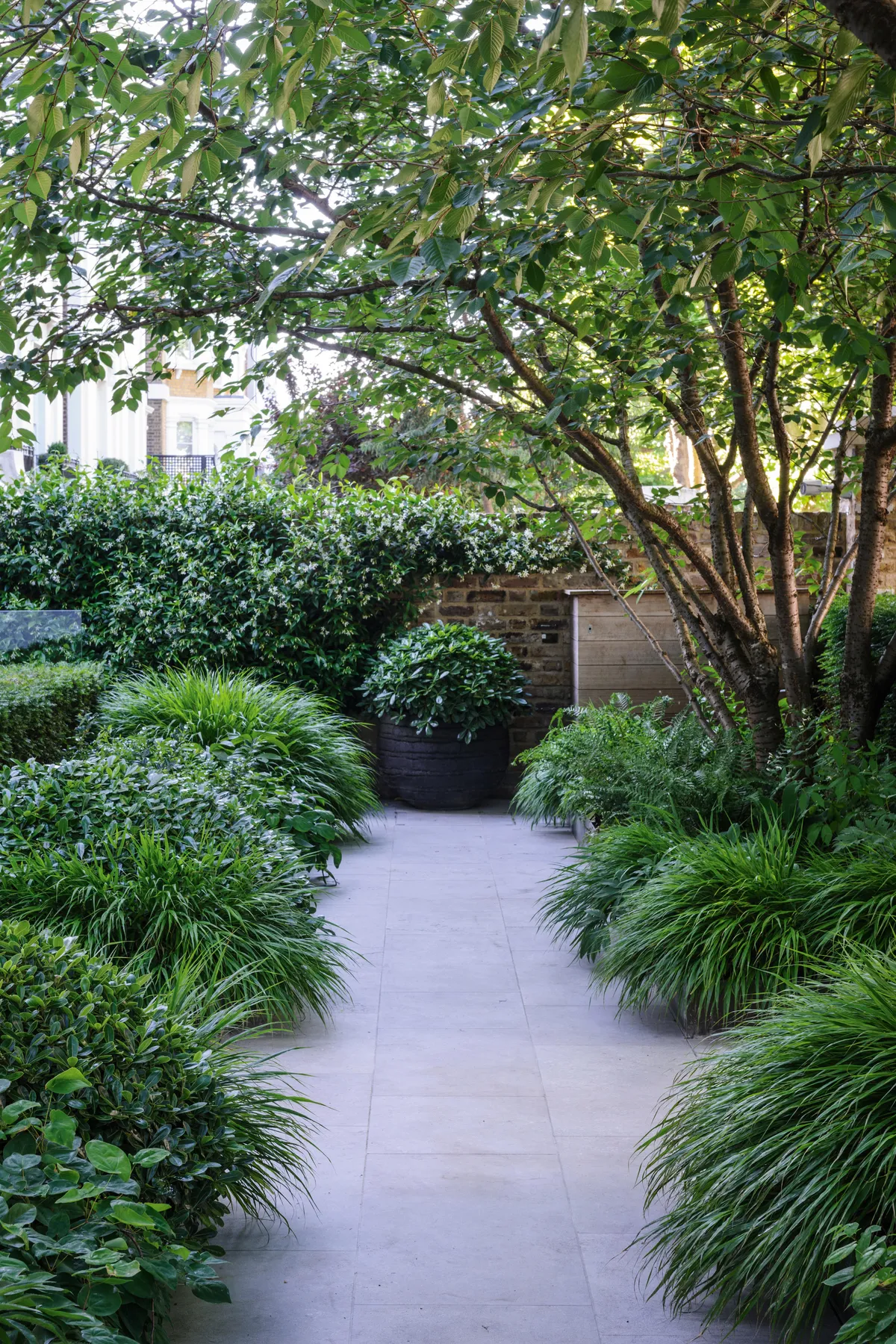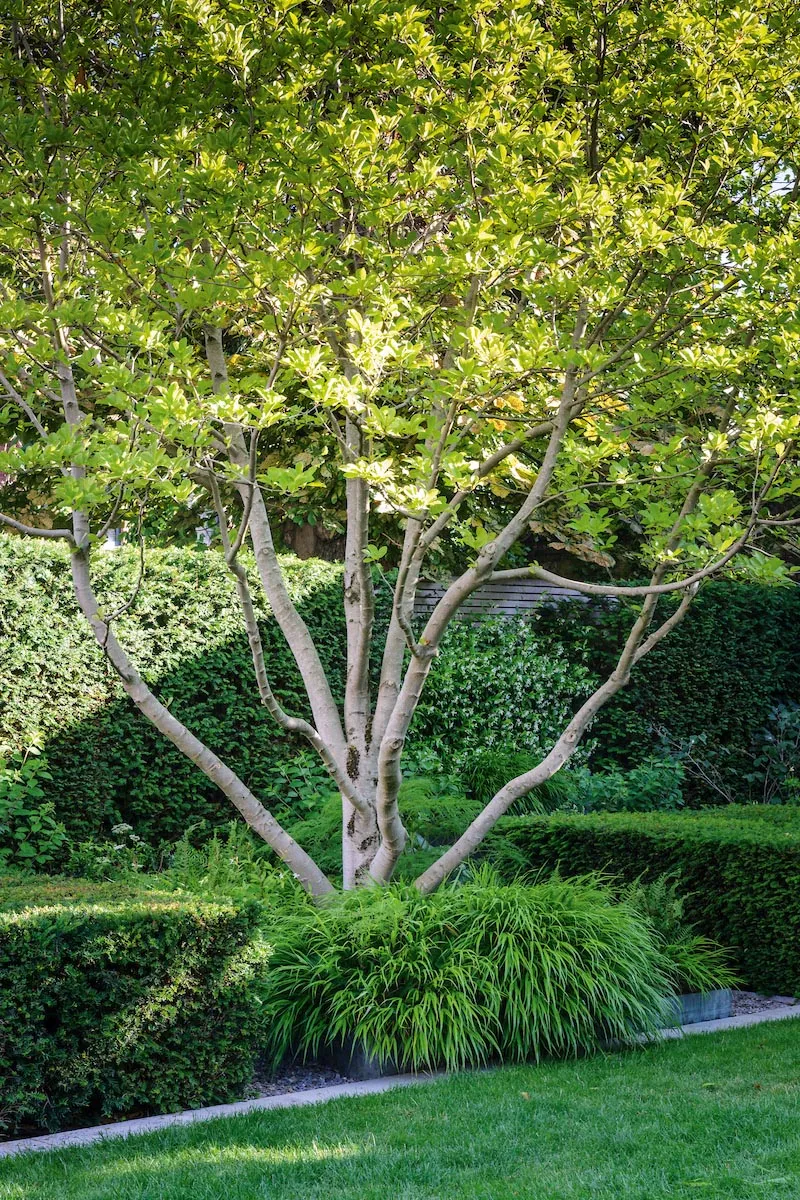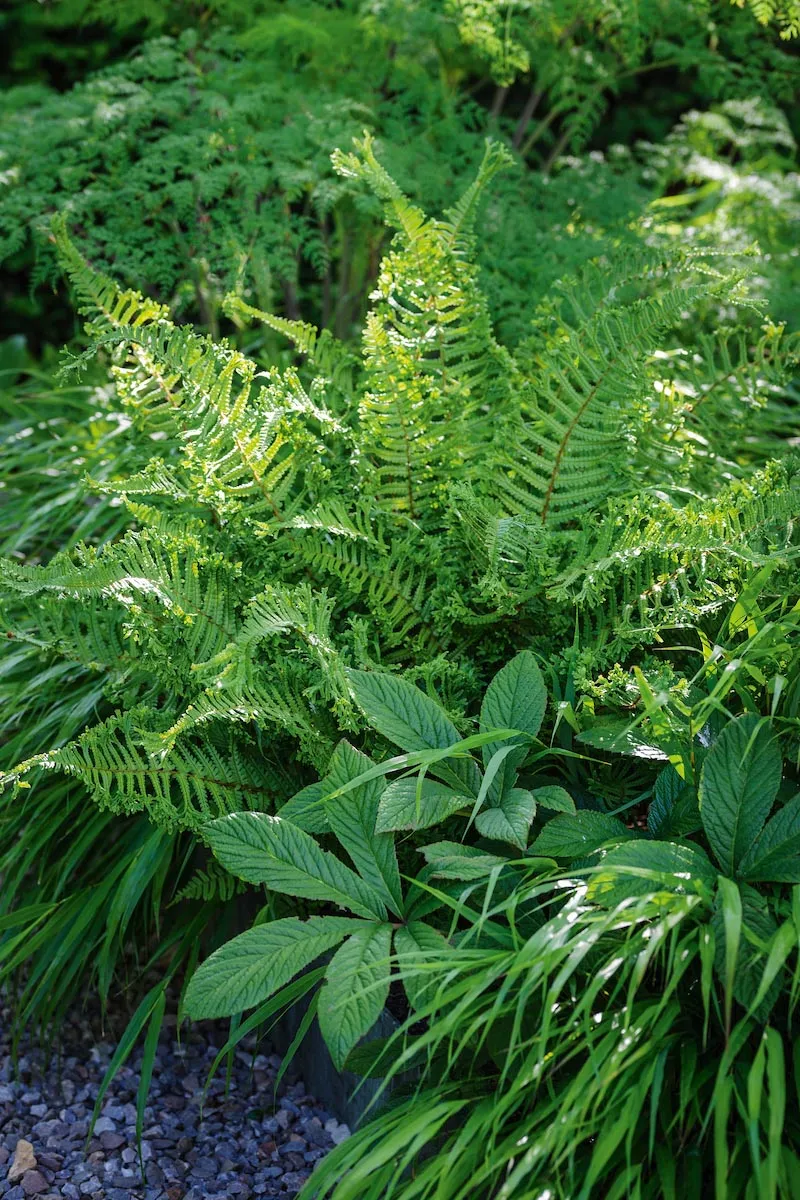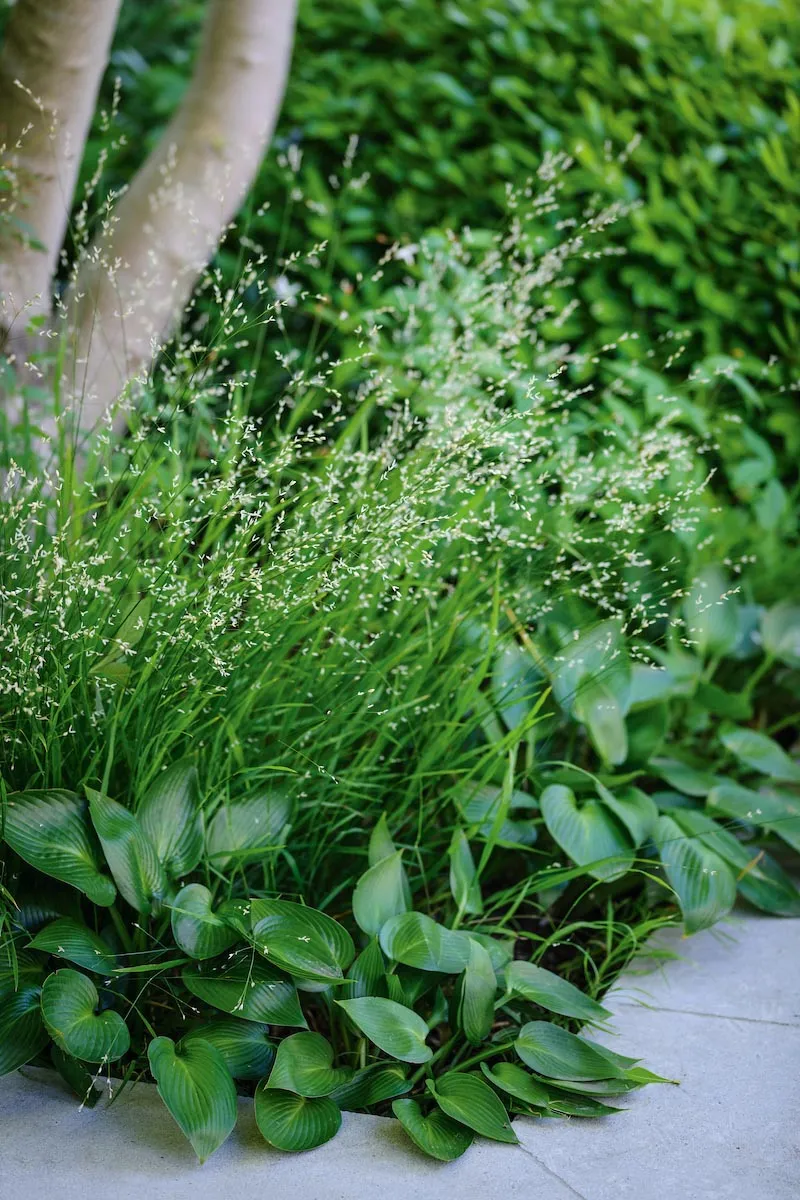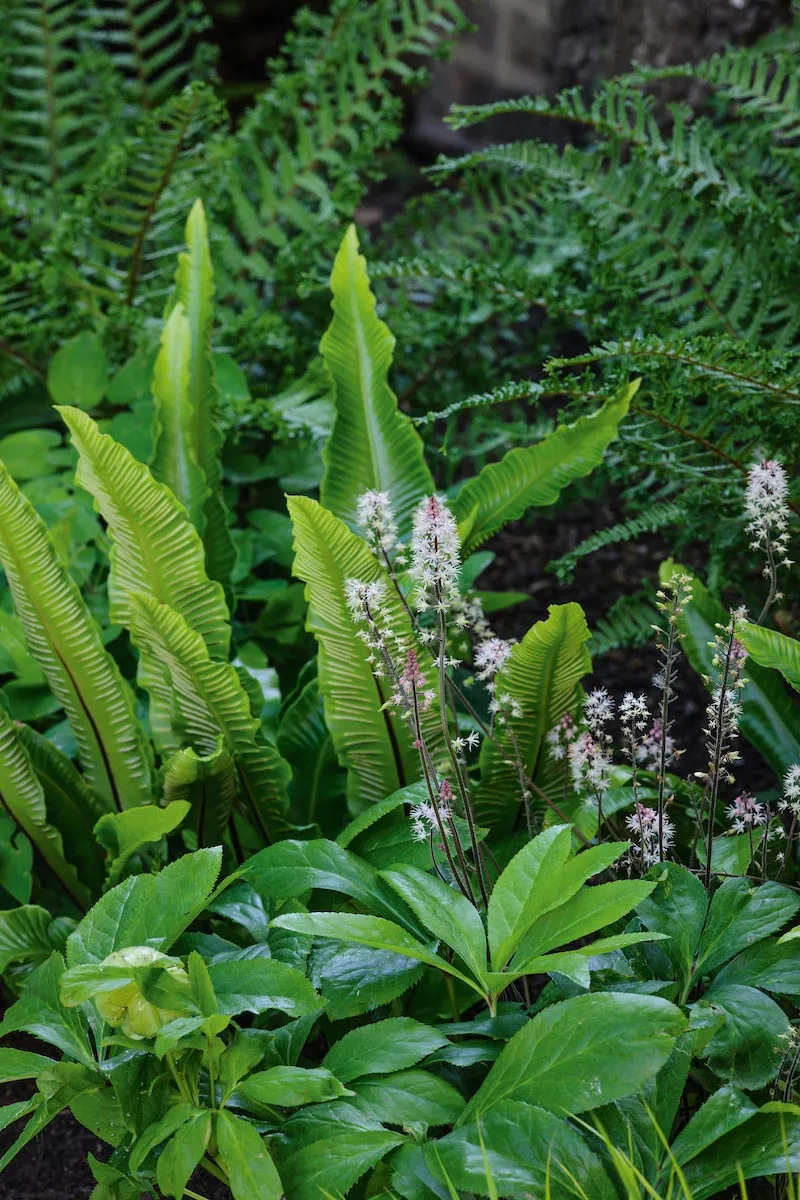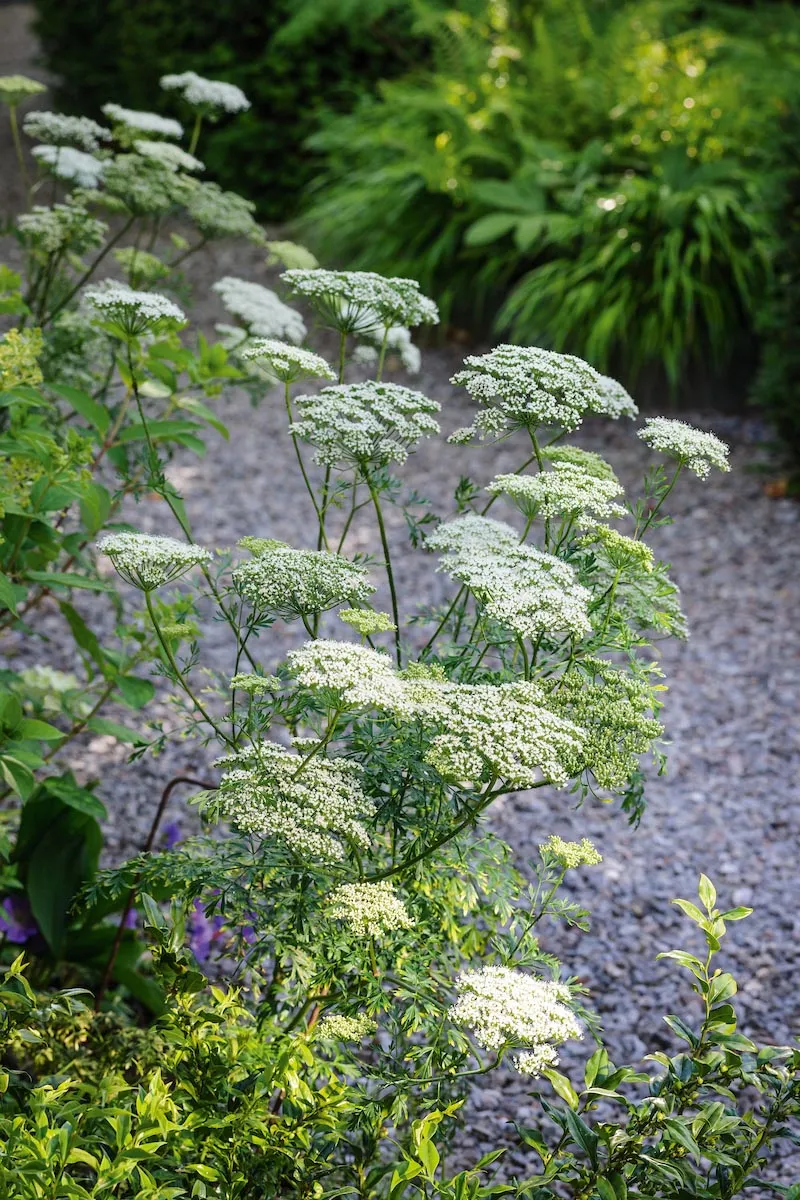A good sweep with a brush works wonders for a small garden, but neatness alone will not make it interesting, which is especially apparent when everything can be seen at a glance. Gardens come alive with leaf textures, tree shapes, considered materials and beautifully made structures; the kind of elements you would expect to see in a show garden. This is easier said than done, unless you were to hire the young design duo Harris Bugg Studio, whose individual RHS Chelsea Flower Show gardens have shown a solid understanding of medal-winning design.
Charlotte Harris and Hugo Bugg announced their partnership at Chelsea in 2017, just before Charlotte won a gold medal for her first outing at the show – Hugo had won gold two years earlier. Now, their team of seven is split between London and Exeter. Over the past three years, the pair have amassed a fearless array of projects from roof terraces and country estates, to vast undertakings such as the National Trust’s Clumber Park in Nottinghamshire and the walled garden at the new RHS Garden Bridgewater, near Manchester.
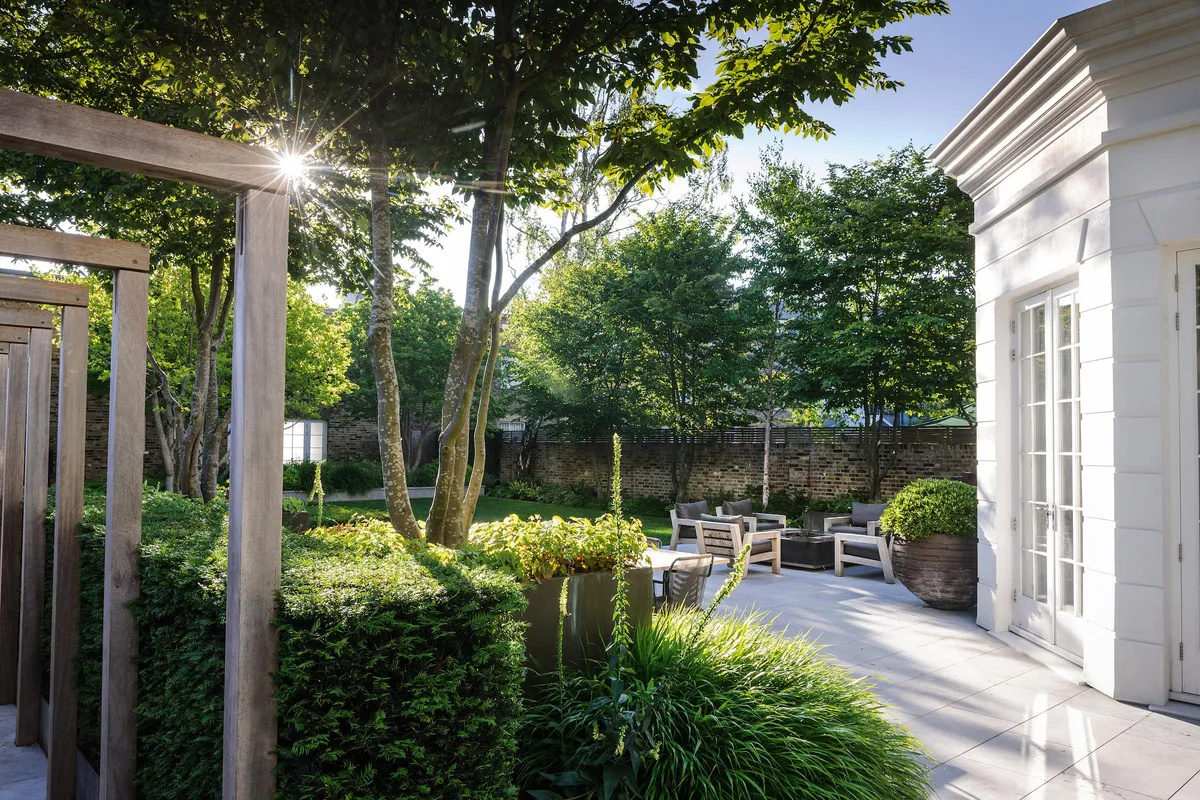
The garden that wraps around this Victorian villa in west London was completed two years ago, after large-scale building and engineering works on the property. A basement extends under the lawn, while an underground connecting duct leads to a mews at the back. These factors naturally presented some challenges to Charlotte and Hugo, who were tasked with making a year-round garden with plenty of structure and greenery, that would suit the elegance of the house while also accommodating goal posts for two boys. Read more about the garden below.
Key elements
What Residential garden. Where West London. Soil Topsoil brought in, after extensive building works and excavation. Size 15m x 6m (back), 15m x 30m (front). Aspect Northeast facing. Special features A garden with height and structure built over an excavated basement. Designed by Harris Bugg Studio (harrisbugg.com).
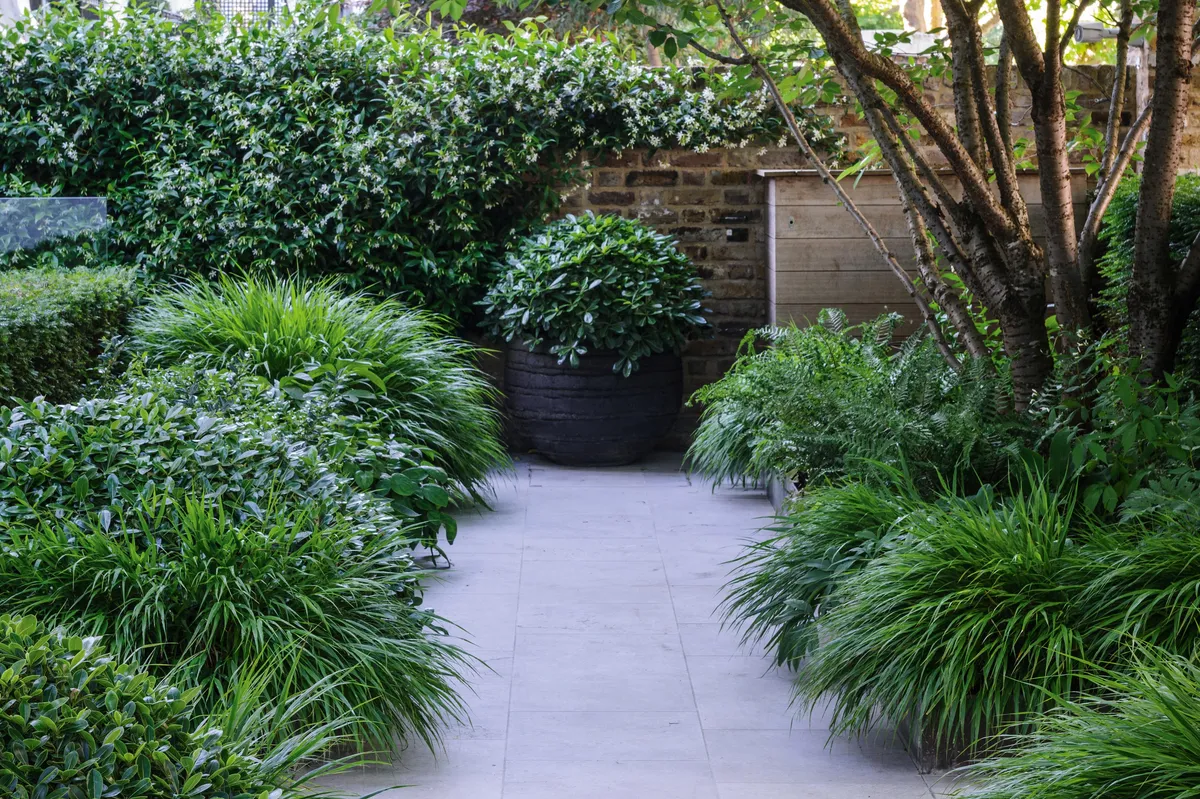
At the front of the house, a narrow, shaded passage is lined with mounds of clipped Pittosporum tobira ‘Nanum’ interspersed with loosely rounded mounds of Hakonechloa macra, growing beneath a pair of Prunus ‘Accolade’.
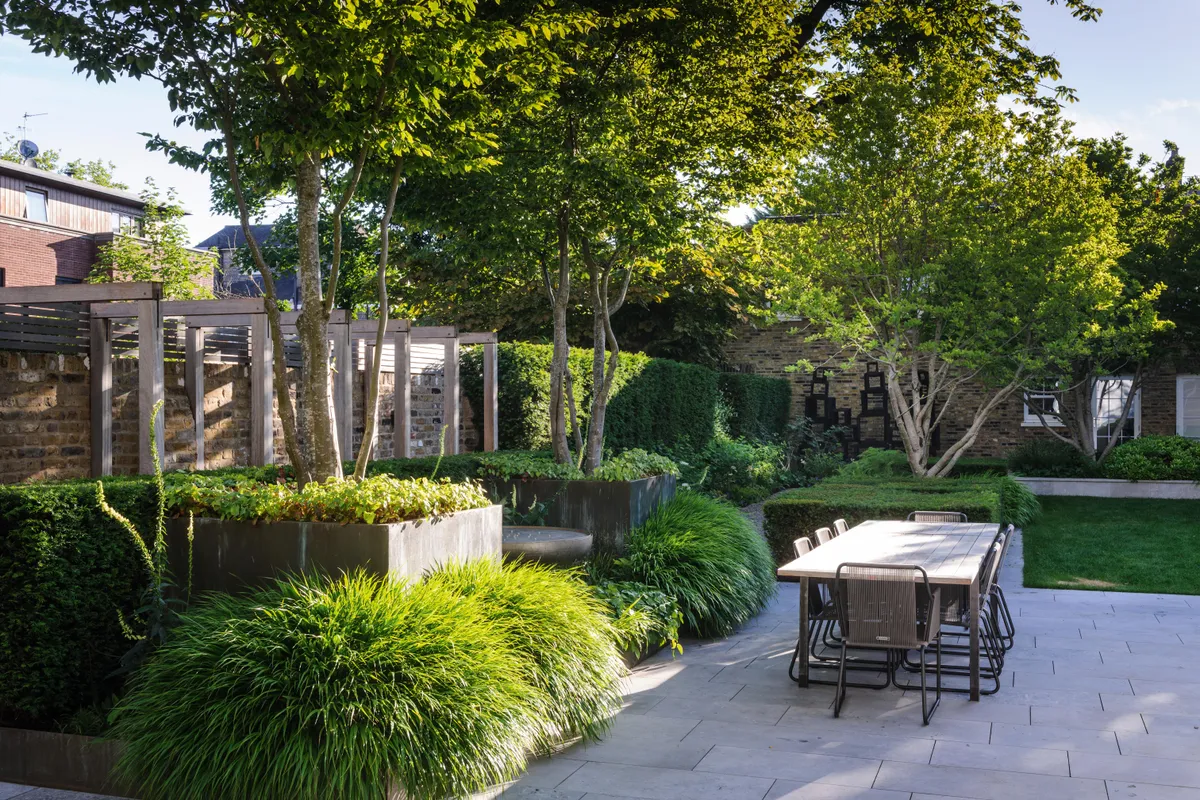
Multi-stemmed Carpinus betulus, underplanted with Epimedium x versicolor ‘Sulphureum’, fill raised beds of patinated bronze, with cascades of Hakonechloa macra further down. The fountain (made by Bamber Wallis), is surrounded by droplet-like flowers of Melica altissima ‘Alba’.
Ideas to help compensate for lack of soil depth in a small garden
• Raised beds don’t have to be a choice between rustic-style sleepers or industrial Corten steel. They could pick up other elements in the garden – the patinated bronze used here complements the weathered wood of the pergola.
• Smaller trees can add height without necessarily needing depth. These hornbeams and magnolias have rootballs of 1.1m and 2m respectively. Both are gently cut back twice a year to restrict growth.
• A pergola adds essential height and can be used to add vertical planting. Left unplanted, as here, it looks modern and can support annuals in summer.
• Planting against a house or wall, will also add height but if that’s not an option as was the case in this garden, then invest in good-looking, oversized pots for clipped evergreens.
• Furniture that weathers well, such as the iroko lounge chairs used here, are good-looking and add sculptural proportions to the garden.
• A lawn needs drainage but it doesn’t need depth.
